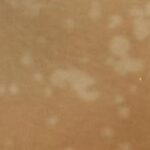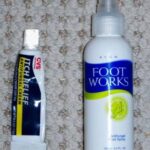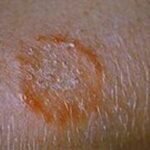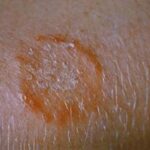Ringworm is a very common condition to be diagnosed with. What people are unaware of is there are several different forms of this pesty condition. It can vary in looks and show up on almost anywhere on the body. Ringworm, also known as tinea, is caused from fungi. Many believe it is caused from worms but it is merely a fungal infection.
Ringworm is caused from fungi called dermatophytes. Dermatophytes thrive in warm, moist environments. Dermatophytes survive off of dead tissues, such as hair, skin, and nails. Ringworm is a zoonotic disease, which means it is spread from animals to humans, especially from cats. Although ringworm is extremely contagious, it can easily be treated with an antifungal cream. Ringworm can be spread be touching an infected person, object, soil, or animal. Heat and moisture increase the likeliness of contracting ringworm. Ringworm grows in sweaty, moist areas like skin fold. This infection commonly causes round spots and is ring shaped; however it does not always appear in this form. There are seven most common types of ringworm.
Tinea Capitis
Tinea capitis is ringworm of the scalp. This form of ringworm usually occurs in adolescence and older children. Ringworm on the scalp appears patchy on the skins surface. This causes hair loose on the affected areas.
Tinea Faciei
Tinea Faciei is ringworm on the face. This form appears on the face, not in the beard region. This type of ringworm is rarely ring shaped and often contains irregular boarders. This infection causes flakey, red patches.
Tinea Unguium
Tinea unguium is ringworm of the nails. Among all fungal nail infections, this is the most common. It is sometimes called anychomcosis. When infected with ringworm, the finger nails appear white. They become thick and brittle. Toenails on the other hand appear yellow when infected. The nails also become thick and brittle.
Tinea Manus
Ringworm of the hand is called tinea manus. This occurs on the hands, mainly between the fingers and on the palms. Oddly, only one hand is usually affected. Ringworm of the hand causes flaking on the afflicted area. This area appears thicker then the rest of the hand.
Tinea Pedis
Tinea Pedis is ringworm of the foot. This form of ringworm is also athlete’s foot. Ringworm of the foot causes flaking and inflammation on the foot, mainly the toes. It causes itching, stinging, redness, and burning on the infected area.
Tinea Cruris
Ringworm of the groin is tinea cruris. This is a very common occurrence known as jock itch. This form of ringworm appears reddish brown in color. The rash normally extends from the groin down the inner thighs. The cause of the ringworm is from sweating, heat, humidity, and friction on the area.
Tinea Barbae
Tinea barbae is a common form of ringworm of the beard. This is also known as barbers itch. This infection causes swelling and a crust. The hair may also begin to break off.
There are a few easy habits to practice to prevent becoming infected with any form of ringworm. First, do not share cloths, towels, sheets, or sports gear. Second, wear slippers or shoes in all public areas, especially in showers and pools. Third, shower after participating in sports. Fourth, wear loose fitting cotton clothes. Be sure to change your socks and underwear daily. The final step to take in order to prevent ringworm is to keep your skin clean and dry. Make sure you dry your body well after bathing.
Sources:
” Ringworm” By Brunilda Nazario, MD October 2, 2008, Web MD
http://www.webmd.com/skin-problems-and-treatments/slideshow-ringworm





